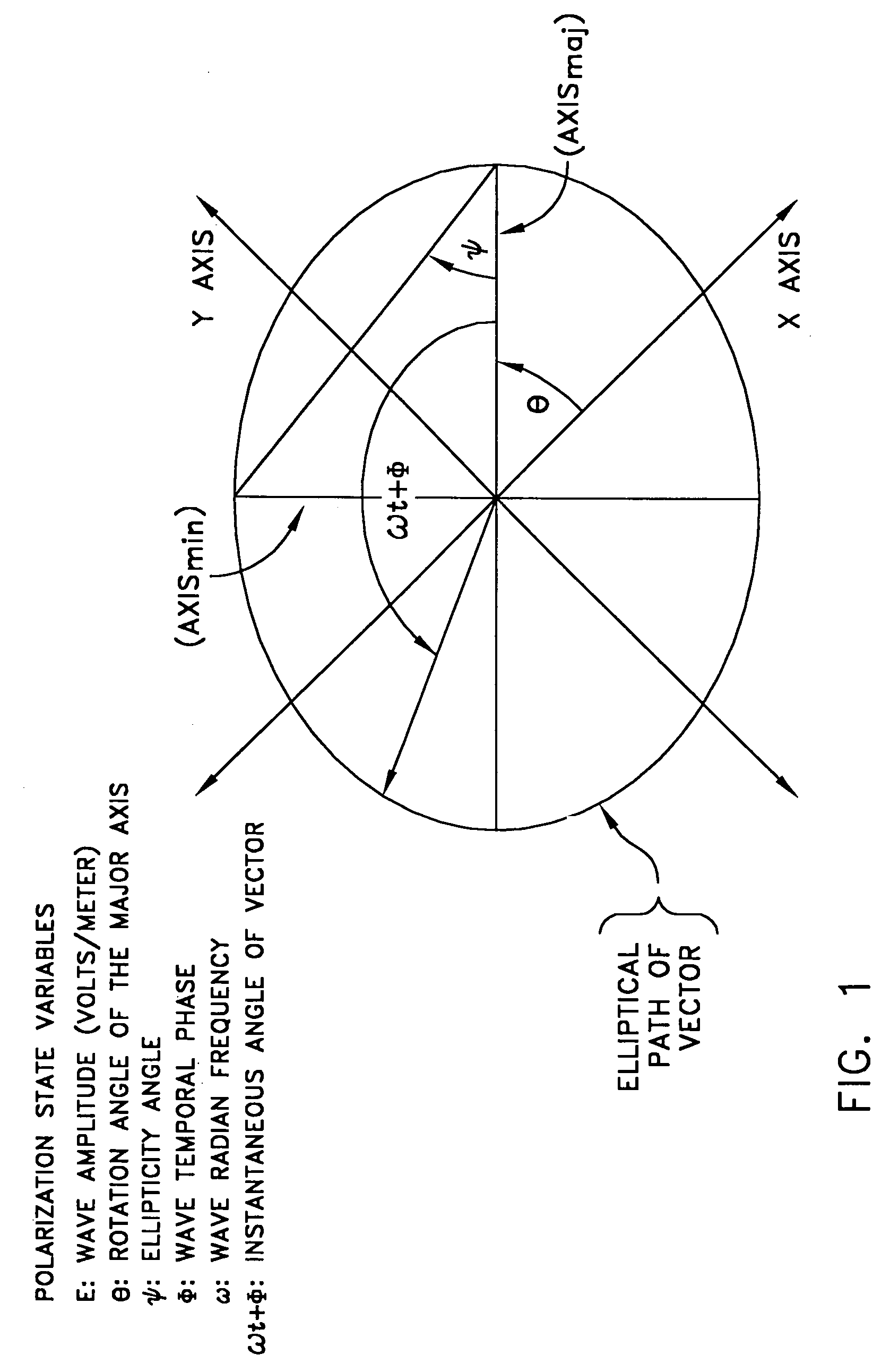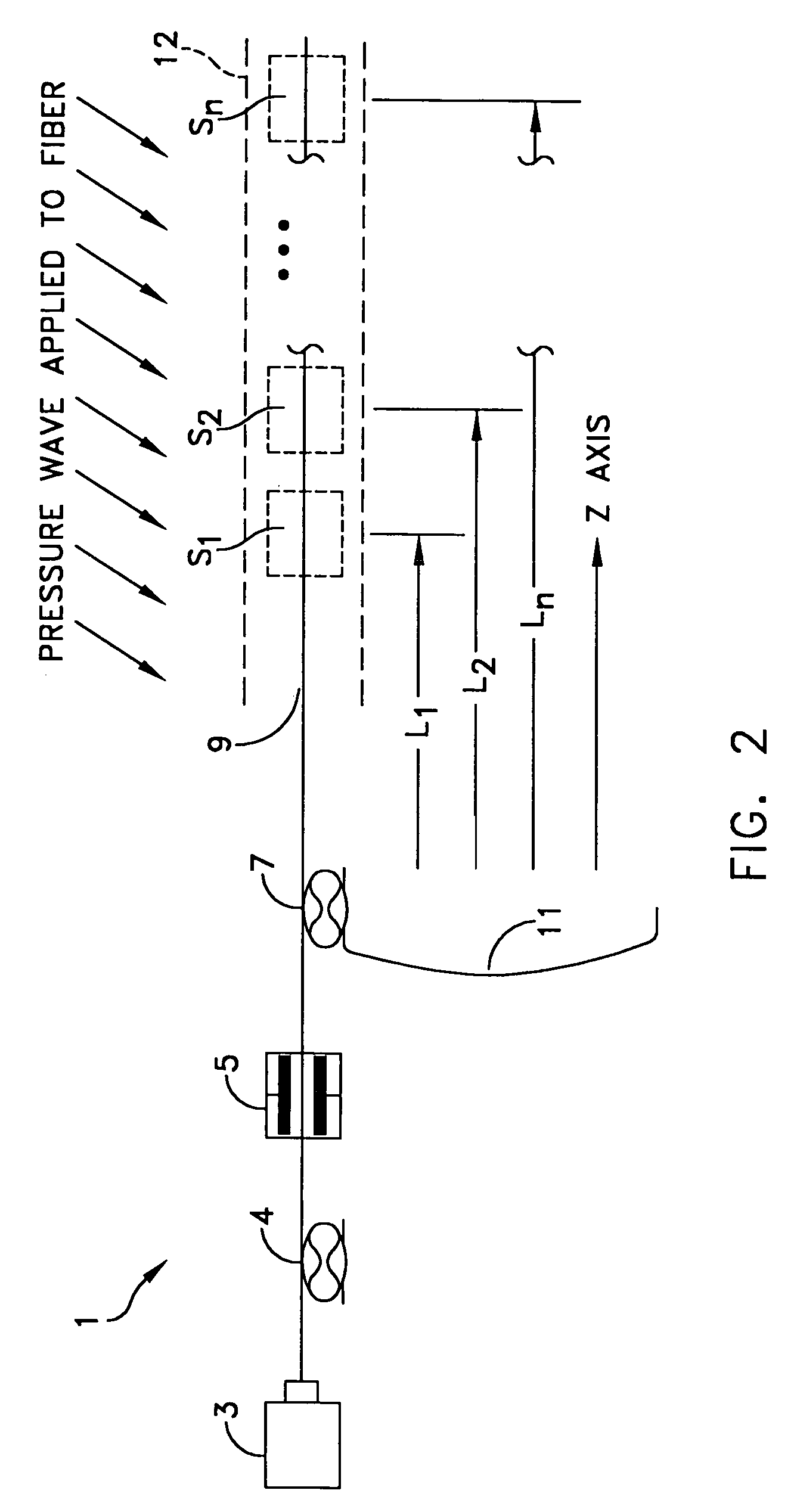Natural fiber span reflectometer providing a virtual phase signal sensing array capability
a technology of virtual phase signal and reflectometer, which is applied in the field of time domain reflectometers, can solve the problems of not showing how to obtain signals, fiber spans costing hundreds of thousands of dollars each, and the cost of manufacturing such perimeter monitoring spans using reflective bragg grating sensors
- Summary
- Abstract
- Description
- Claims
- Application Information
AI Technical Summary
Benefits of technology
Problems solved by technology
Method used
Image
Examples
example implementations
[0170 of the phase detection 317 of FIG. 8 will now be presented. Refer to FIG. 10. An example digital phase detector implementation, 317, is shown in the block diagram. The signal proportional to cos(Φm) on electrical path 313 is converted to a digital code or number by analog-to-digital converter (hereafter, A / D) 513. The digital number proportional to cos (Φm) is input into the digital signal processor 501 via electrical path 515. The signal proportional to sin(Φm) on electrical path 315 is converted to a digital code or number by A / D 523. The digital number proportional to sin(Φm) is input into the digital signal processor, 501, via electrical path 525. The digital signal processor converts the numbers proportional to sin(Φm) and cos(Φm) into a number proportional to Φm as follows.
[0171]Suppose the constant of proportionality for the sin(Φm) and cos(Φm) is Vm. Then the digital signal processor can optimally select estimates of Φm and Vm to minimize the calculated error function:...
PUM
| Property | Measurement | Unit |
|---|---|---|
| depths | aaaaa | aaaaa |
| depths | aaaaa | aaaaa |
| length | aaaaa | aaaaa |
Abstract
Description
Claims
Application Information
 Login to View More
Login to View More - R&D
- Intellectual Property
- Life Sciences
- Materials
- Tech Scout
- Unparalleled Data Quality
- Higher Quality Content
- 60% Fewer Hallucinations
Browse by: Latest US Patents, China's latest patents, Technical Efficacy Thesaurus, Application Domain, Technology Topic, Popular Technical Reports.
© 2025 PatSnap. All rights reserved.Legal|Privacy policy|Modern Slavery Act Transparency Statement|Sitemap|About US| Contact US: help@patsnap.com



